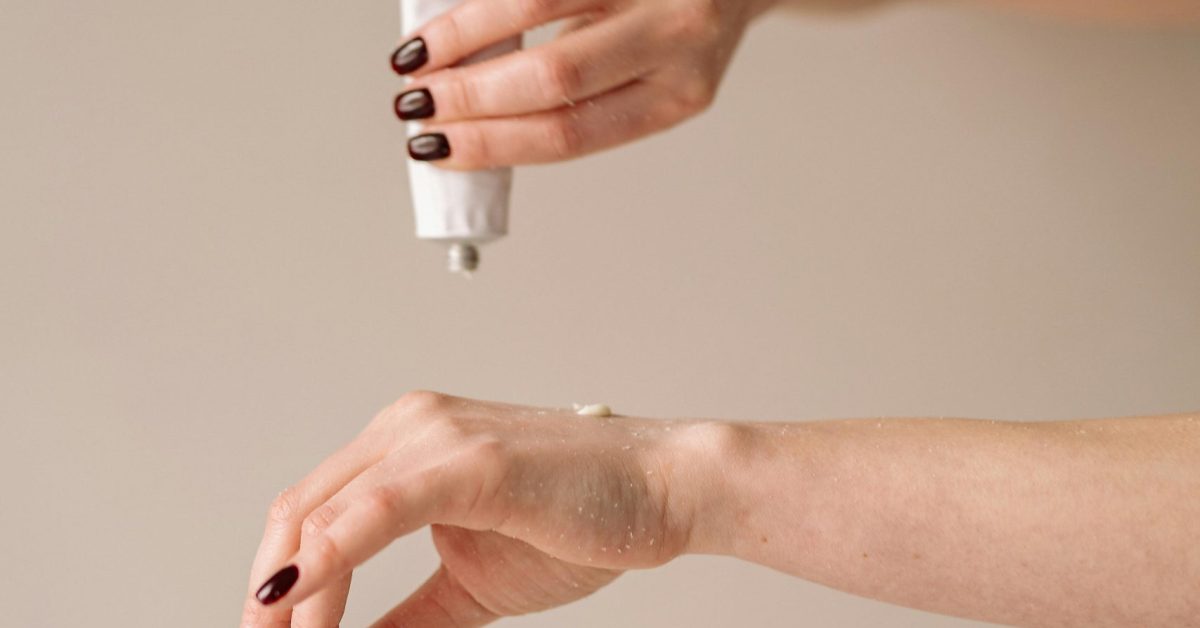The question of pain management during tattooing is as old as the art form itself. With the increasing availability of topical numbing creams, many clients at Northern 92 Tattoo Studio in Lancashire ask whether these products might make their tattoo experience more comfortable. The answer, like most aspects of tattooing, is more complex than it first appears. Here’s our comprehensive guide to understanding numbing creams, their benefits, potential risks, and how to make an informed decision.
Understanding Tattoo Numbing Creams
What Are Numbing Creams?
Topical numbing creams contain local anaesthetic agents designed to temporarily reduce sensation in the skin. The most common active ingredients include:
- Lidocaine: The most widely used topical anaesthetic
- Prilocaine: Often combined with lidocaine for enhanced effect
- Benzocaine: Less commonly used due to allergy concerns
- Tetracaine: Sometimes included in combination formulations
These creams work by blocking sodium channels in nerve cells, temporarily preventing pain signals from reaching the brain.
How They Work
When applied correctly, numbing creams:
- Penetrate the skin’s surface layers
- Temporarily block nerve signals
- Reduce pain sensation for 1-3 hours
- Gradually wear off as the body metabolises the anaesthetic
The effectiveness varies significantly based on individual skin type, application method, and the specific formulation used.
The Potential Benefits
Pain Reduction
The most obvious advantage is reduced discomfort during tattooing:
- Lower pain levels especially during initial outlining
- Extended comfort for longer sessions
- Reduced anxiety for those fearful of tattoo pain
- Better tolerance for particularly sensitive areas
Improved Session Quality
Pain reduction can lead to better overall results:
- Less movement from clients during tattooing
- Steadier positioning allowing for more precise work
- Longer sessions potentially reducing the number of appointments needed
- Better client experience leading to more relaxed sessions
Accessibility Benefits
Numbing creams can make tattooing accessible for:
- Pain-sensitive individuals who might otherwise avoid tattooing
- Medical conditions that increase pain sensitivity
- Anxiety disorders where pain fear prevents getting desired tattoos
- Extensive work requiring multiple lengthy sessions
The Potential Risks and Drawbacks
Skin Reactions and Allergies
Topical anaesthetics can cause various skin issues:
- Allergic reactions ranging from mild irritation to severe dermatitis
- Skin irritation that can affect tattoo healing
- Chemical burns from overuse or high-concentration products
- Sensitisation leading to future allergic responses
Impact on Tattooing Process
Numbing creams can create technical challenges:
- Skin texture changes making it harder to work on
- Altered ink absorption potentially affecting colour saturation
- Swelling or inflammation complicating the tattooing process
- Unpredictable wear-off causing pain to return mid-session
Safety Concerns
Serious health risks, though rare, can include:
- Methemoglobinemia: A rare but serious blood condition from excessive absorption
- Systemic toxicity: From overuse or high concentrations
- Interaction with medications particularly heart or blood pressure drugs
- Masking of complications preventing recognition of problems during tattooing
Quality and Healing Concerns
Some potential negative impacts on tattoo quality:
- Altered skin condition during healing
- Possible infection risk if products aren’t sterile
- Healing complications from chemical irritation
- Colour retention issues in some cases
Safety Considerations
Medical Contraindications
Certain individuals should avoid numbing creams:
- Pregnant or breastfeeding women
- Heart condition patients especially those on cardiac medications
- Blood disorders including anaemia or circulation problems
- Liver or kidney disease affecting drug metabolism
- Known allergies to local anaesthetics
Proper Usage Guidelines
If using numbing cream, follow these safety protocols:
- Patch testing at least 24 hours before use
- Professional consultation with your tattoo artist
- Medical approval if you have health conditions
- Proper application following manufacturer’s instructions exactly
- Time limits avoiding excessive application duration
Quality and Sourcing
Ensure product safety by:
- Buying from reputable suppliers not unknown online vendors
- Checking ingredients for known allergens
- Verifying concentrations avoiding products with excessive anaesthetic levels
- Professional recommendations from licensed tattoo artists
- Medical grade products when possible
Professional Perspectives
Artist Considerations
Many tattoo artists have mixed feelings about numbing creams:
Supportive viewpoints:
- Can help nervous clients relax
- Allows for longer, more productive sessions
- Makes tattooing accessible to pain-sensitive individuals
- Reduces client movement and anxiety
Concerns expressed:
- May affect skin texture and ink absorption
- Can mask important pain feedback
- Potential allergic reactions during sessions
- Unknown long-term effects on tattoo quality
Industry Standards
Professional attitudes vary:
- Some studios embrace numbing products
- Others discourage or prohibit their use
- Many leave the decision to individual artists
- Industry consensus emphasises safety and informed consent
The Northern 92 Approach
At Northern 92 Tattoo Studio in Lancashire, we take a balanced, safety-first approach to numbing creams:
Our Policy
We believe in:
- Informed client choice with full education about risks and benefits
- Individual assessment based on client needs and tattoo requirements
- Safety prioritisation above all other considerations
- Professional guidance to help clients make appropriate decisions
Safety Protocols
When clients choose to use numbing products:
- Pre-session consultation about product choice and application
- Patch testing recommendation well before the appointment
- Health screening for contraindications
- Modified techniques to accommodate altered skin conditions
- Careful monitoring throughout the session
Alternative Pain Management
We also offer non-chemical pain management strategies:
- Positioning optimisation for maximum comfort
- Break scheduling to manage pain naturally
- Breathing techniques and relaxation guidance
- Session planning to minimise discomfort through strategic timing
Making an Informed Decision
Questions to Consider
Before using numbing cream, ask yourself:
- Do I have any medical conditions that might create risks?
- Am I allergic to any medications or topical products?
- Is the pain management worth the potential complications?
- Have I discussed this decision with my tattoo artist?
- Am I using a reputable, properly formulated product?
Consultation Process
A proper consultation should cover:
- Medical history including allergies and medications
- Previous experiences with topical anaesthetics
- Tattoo goals and how numbing might affect them
- Alternative options for pain management
- Emergency procedures if reactions occur
Risk Assessment
Consider your individual risk profile:
- Health status and medication interactions
- Skin sensitivity and allergy history
- Tattoo location and expected session length
- Personal pain tolerance and anxiety levels
- Quality priorities versus comfort preferences
Best Practices If You Choose to Use Numbing Cream
Pre-Application Safety
- Patch test the product 24-48 hours before your appointment
- Read instructions completely and follow precisely
- Check expiry dates and product integrity
- Inform your artist about your intention to use numbing products
Application Guidelines
- Clean skin thoroughly before application
- Apply correct amount avoiding over-application
- Follow timing exactly as recommended
- Cover appropriately if instructions require
- Remove completely before tattooing begins
During the Session
- Monitor for reactions throughout the appointment
- Communicate any unusual sensations immediately
- Expect changes in how the tattoo feels as numbing wears off
- Follow aftercare instructions carefully
Alternatives to Consider
Natural Pain Management
- Deep breathing exercises and meditation techniques
- Music or distractions to redirect focus
- Comfortable positioning and regular breaks
- Gradual exposure through shorter initial sessions
Session Planning
- Strategic timing for optimal personal pain tolerance
- Break scheduling to prevent pain buildup
- Location consideration starting with less sensitive areas
- Progressive approach building tolerance over multiple sessions
Conclusion
Numbing creams for tattoos represent a personal choice that comes with both benefits and risks. While they can significantly improve comfort for some clients, they’re not without potential complications. The decision should be made carefully, with full understanding of the implications and proper safety precautions.
At Northern 92 Tattoo Studio, we believe the most important factors are client safety, informed consent, and achieving the best possible tattoo results. Whether you choose to use numbing products or rely on natural pain management, we’re committed to providing professional guidance and safe, high-quality tattooing.
If you’re considering numbing cream for your next tattoo, contact us for a detailed consultation where we can discuss your specific needs, health considerations, and the best approach for your individual situation. Your safety and satisfaction are our top priorities, and we’re here to help you make the most informed decision possible.
Remember: there’s no shame in wanting to manage pain during tattooing, but there’s wisdom in approaching that management safely and thoughtfully.



